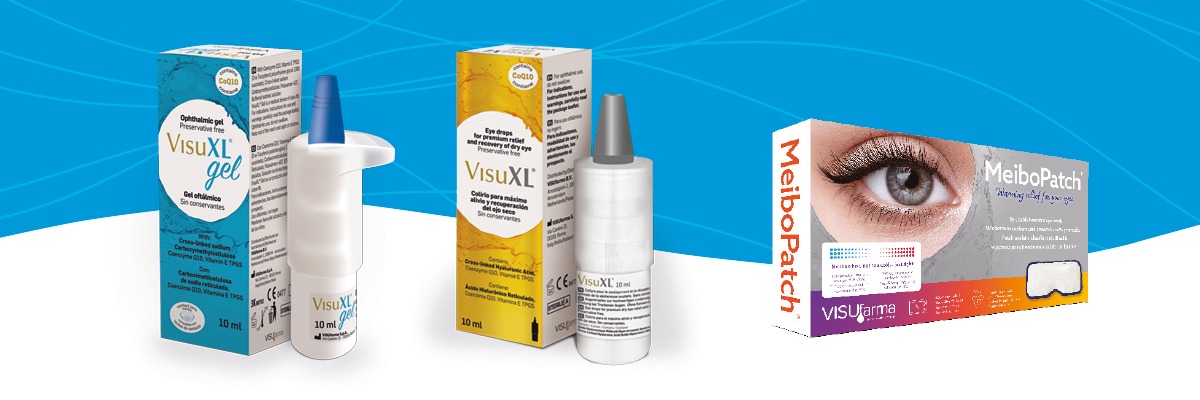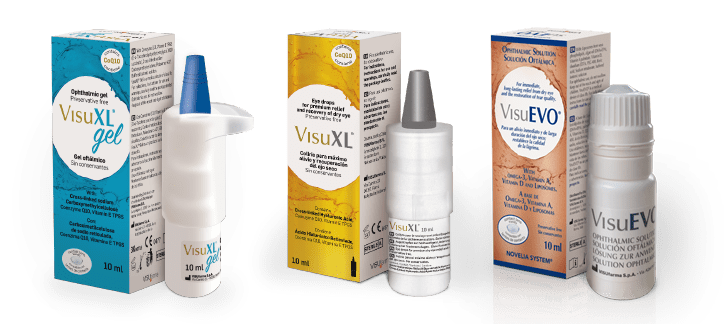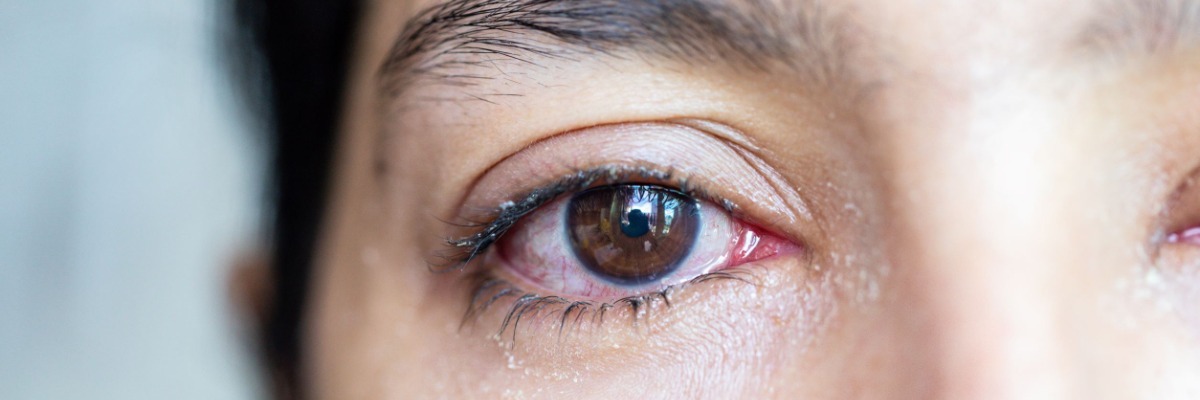5 Dry Eye Myths You Need To Know About
Dry Eye Syndrome is a condition that affects 1 in 4 people in the UK. 1 It is a multi-factorial condition, so can be caused by multiple factors.
[1]Causes of chronic Dry Eye Syndrome can range from medical conditions, to age and gender, lifestyle choices and as a result of the environment you live in.
This blog unpacks some of the biggest Dry Eye myths, to give you all the information you need to ease dry, sore, itchy eyes. [2]
Myth 1: Dry Eye syndrome only affects women
Whilst it’s true that the Menopause can trigger Dry Eye symptoms, making it more likely that women over 50 to suffer from the condition, men can also develop Dry Eye Syndrome! [3]

Myth 2: Dry Eye Syndrome is all about dryness
Dry eyes are just one of the symptoms of Dry Eye Syndrome. Other symptoms include:
- Itchy eyes
- Sore eyes
- Gritty eyes
- Red eyes
- Blurry vision
- Sensitive to light
- Eyes more watery than normal
- Tears drying up (tear evaporation)
- Decreased tear production [4]
Dry Eye Disease is a side effect of other conditions such as Glaucoma, Meibomian Gland Dysfunction and Lupus. Which symptoms you have can depend on which type of Dry Eye you have. Learn more about the different types of Dry Eye Syndrome.
Myth 3: Eye drops are all you need to treat dry eyes
Eye drops, like artificial tears, and longer-lasting drops like VisuXL ® Gel, are an effective treatment option to ease Dry Eye symptoms. [5]
However, some patients benefit from a three-step treatment plan, combining eye drops with an eyewash like Naviblef ® to cleanse the eyelids if they are gritty, and a heated compress like Meibopatch ® to unblock the meibomian glands if patients are also experiencing Meibomian Gland Dysfunction. [6] [7]
It is useful to consult your doctor to find out the best treatment plan for your condition.

Myth 4: Dry Eye Disease only impacts older people
It’s true that Dry Eye Syndrome is more likely to affect you if you are over 50. This is because as we age, our cells experience more oxidative stress, and the lacrimal gland that produces our tears deteriorates. [8]
However, your likelihood of developing Dry Eye Syndrome depends on multiple different factors. Age is just one of these factors, but suffering from other conditions, living in a dry, windy environment or staring at computers for many hours can also increase your chances of developing symptoms. Eye injury, vision correction and eye surgery can also lead to Dry Eye Syndrome. [9]

Myth 5: Everyone needs the same treatment for Dry Eye
Dry Eye Syndrome can look and feel different for each individual. Therefore, not everyone needs the same treatment. For example, certain patients may have Aqueous Deficient Dry Eye, others have Evaporative Dry Eye, and some patients have a combination of both. Therefore, eye drop formulas need to be appropriate for each case. If you are suffering from Meiboman Gland Dysfunction (MGD), then heated compresses like Meibopatch ® will help to ease your symptoms. But, if you are suffering purely from evaporative Dry Eye, an eye drop like VisuEvo ® will help keep your eyes lubricated. [5] [10]

Hopefully, this article will have helped you understand what’s true and what’s false when it comes to Dry Eye Syndrome.
In most cases, the best way to treat dry eyes, Also known as dry eye syndrome, is to use eye gel or eye drops.
VisuXL Gel® is a preservative-free smart gel lubricant for dry eye syndrome. It provides comfort in a bottle with it’s long-lasting lubrication properties giving 12-hour dosing with just one drop and is suitable for both day and night use.
VisuXL® is a preservative-free eye drop lubricant for dry eye syndrome. Due to its unique ingredients, VisuXL® will help you recover from eye surgery, an injury or persistent damaging dry eye.
VisuEvo® is a preservative-free eye drop that prevents excessive evaporation of the tear film. Its unique formula contains omega-3 essential fatty acids, Vitamins A and D and ultra-filtered phospholipids that facilitate tear film presentation and control evaporation.
All three products are contact lens-friendly and can be used for 180 days after opening.
Shop now
Follow us on social media @dryeyeandme for seasonal Dry Eye tips, and treatment advice.
Find Out Which Dry Eye Treatment is Best for Your Condition
References
- Title of reference here
- NHS UK, Accessed April 2022
- Wilson, Debra Rose, ‘Menopause and Dry Eyes: What’s the link?’, Healthline, 01/04/2020, Accessed April 2022
- ‘Dry Eyes: What’s the link?’, Mayo Clinic, Accessed May 2022
- VisuXL ® Instructions for Use (IFU), Accessed May 2022.
- Naviblef ® Instructions for Use (IFU), Accessed May 2022.
- Meibopatch ® Instructions for Use (IFU), Accessed May 2022.
- De Paiva, C. S, ‘Effects of Aging in Dry Eye’, Int Ophthalmol Clin., 2017 Spring; 57(2): 47–64. Accessed May 2022.
- Alves, M. Novaes, P. De Andrade Morraye, M. Sol Reinach, P. Melani Rocha, E, ‘Is Dry Eye an Environmental Disease?’, Arq Bras Oftalmol, May-Jun 2014;77(3):193-200. Accessed May 2022.
- VisuEvo ® Instructions for Use (IFU), Accessed May 2022.


